Navy Vietnam War Orland Park, IL Flight date: 10/18/23
By Lauren Jones, Honor Flight Chicago Veteran Interview Volunteer
Bruce Hansen’s military career began when he told his Dad, a Marine Raider during WWII, that he would follow in his footsteps and enlist in the Marines. It was 1968, and 18-year-old Bruce was working as a carpenter/laborer, trying to get ahead of the Vietnam draft.
“I think I’m going to join the Marines, Dad,” he said. “And that’s when my Dad put his arm around me and said, ‘No, you’re not. You’re going to join the Seabees’.”
During his service, Bruce’s Dad worked closely with the United States Naval Construction Battalions (Seabees) and knew of the unique brotherhood between them and the Marines. Bruce’s older brother also served as a Seabee in Vietnam around the same time.
So, Bruce took his advice and enlisted. He would soon experience the special bond between the Marines and Seabees firsthand in Vietnam. “We take care of them, they take care of us,” he explained.
In October 1968, he left for basic training at the Naval Construction Center in Gulfport, MS. He left training an E5 and, looking back, feels he was well-trained for the service.
He was then assigned to Mobile Construction Battalion 4 (MCB 4) in Port Hueneme, CA, as his home base. Bruce was placed in “Charlie” Company, which was all builders/carpenters. “Our first really big jobs were in California because of the massive floods that occurred during the spring of 1968. “All hands on deck” were out there helping and caring for people whose homes were severely damaged, and roads were destroyed and stopping or diverting the flooding. We were successful in helping the many people and the town.”
Charlie Company then traveled to southern California and went to the Camp Pendleton Marine Base for MCT training. Bruce earned Marksman in both Rifle and Pistol along with other combat training.
Shortly after that, MCB 4 was ordered to go to Vietnam, and Bruce would serve from April to November 1969. During this time, he worked on various projects in Da Nang, Dein Ba, and Hoi An. Each project had its own challenges and many firefights.
Bruce was exposed to the harsh reality of the Vietnam War the first night he arrived in Da Nang. “We put our bags down and got organized. The Seabees had it nice because we built our own places to stay. So we enjoyed what the previous Seabees had built and didn’t stay in tents,” he chuckled. “And then it turned into hell. Our first night there was hell. It was mortar and rocket attacks nearly every night.”
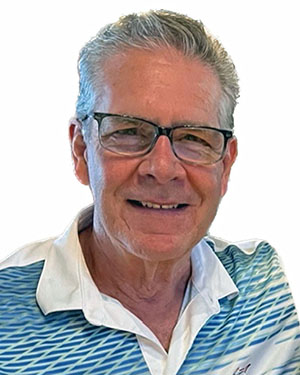
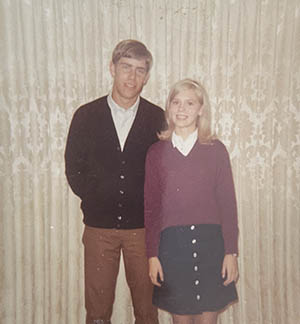
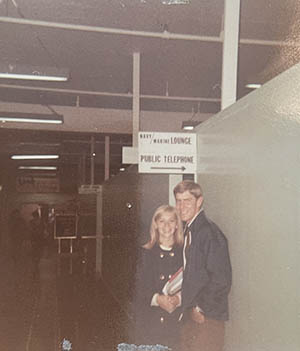
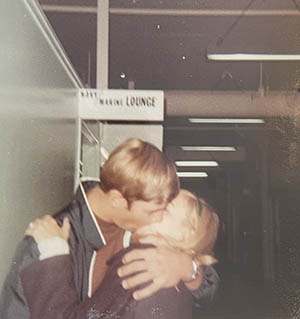
Bruce explained that Da Nang was more toward the north of South Vietnam, and his camp was stationed across the road from III Marine Amphibious, which held helicopters and fighter planes. So, the Viet Cong would shoot from the center of Da Nang, trying to hit the Marine camp. “They fell short, so they would hit our camp instead.
“One of the rockets that fell next to our hooch didn’t explode. If it had, I wouldn’t be talking to you. You could reach out and touch it. From that point on, every night, we just kept getting hit. The towers would set off an air siren, and we’d run to the mortar trenches until it was over.
There were no nights of peace there. Not anywhere, actually.”
Bruce’s first assignment was Freedom Hill and ASP-1 in Da Nang. Bob Hope was scheduled to entertain the troops there in December and a major explosion at Ammo Supply Point One had destroyed several buildings. The blast blew up about ten ammo supply enclosures that were just on the other side of the hill. But they knew Bob would be there in December, “come hell or high water.”
“The dirt and material from the explosion destroyed so many buildings. We had to put it back together again. The whole beer garden was one big roof, which just came down. But we figured out how to raise it again and add new posts. We had planking and beams coming across, and two cranes lifted the whole thing up. It really saved it.”
From there, the company had a detachment in Dein Ba and Bruce requested to get on that crew. They were there to build a new base for the Republic of Korea (ROK) Marines. “I really enjoyed those men,” Bruce said. “They were wonderful people. We would try and talk, and they showed us their family pictures. With just hand gestures and nodding heads we understood each other. They were our protectors.
We were very close to the river, building all of their hooches and a command post. There was shooting or firing mortar rounds at us every night, but the ROK Marines would always take care of it for us. They were our protectors and good at warning others to leave the Seabees alone.”
But Bruce’s company was involved in several firefights, too. Bruce and his crew would take their positions on the berm and do what had to be done. One day there were Marines in a firefight on the other side of the river. Bruce and another team member were up on a roof installing metal roofing on a “hutch”. Bruce was on one side and Nolan on the other. He couldn’t hear anything happening on his side, so Bruce looked over the ridge and Nolan wasn’t there. “I was hearing plinking going on around me, thinking they were throwing nails at me. So, I looked down and asked, ‘What are you guys doing?’ when I saw him below, and he yelled, ‘Get your ass down here!’ Turns out it wasn’t nails; they were stray rounds from across the river. So, I slid off and waited until the all clear.”
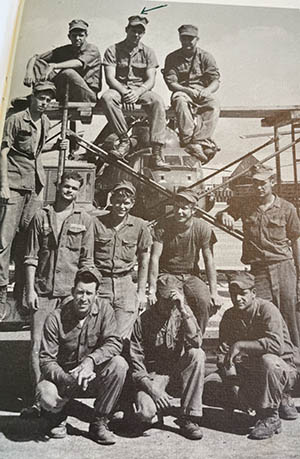
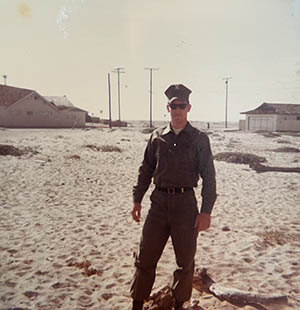
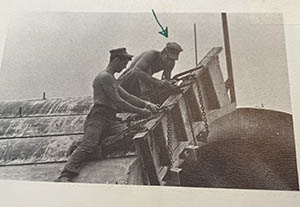
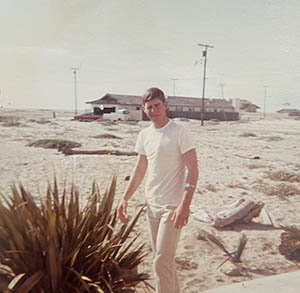
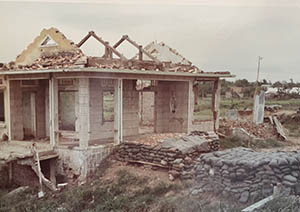
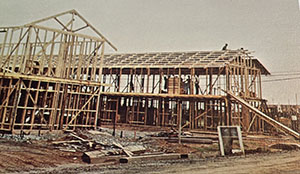
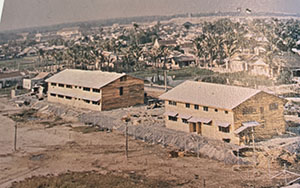
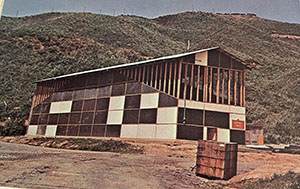
Bruce also recalls the stress of putting four towers in the corners of the camp. The Seabees made the tower base in De Nang and flew them to Dein Ba with flying crane helicopters. He helped hook the towers up to the helicopter for transport.
“The flying crane would send a hook down, and the guy in the cockpit would be talking to you from speakers on the outside. I climbed to the top of the 30′ tower, dealing with tremendous turbulence and swirling. I had goggles and strapped a cap on. Once they said, “Now!” I grabbed the cable and hooked it up and then released it and came down the ladder so they could pick it up. I felt hooking them up was more secure than the guy who had to unhook it after it was set in its new location.”
The ROK Marines were so appreciative of the camp the Seabees built that they put on an exhibition of personal defense and karate for Bruce and his company. “And we all just sat around and watched a show just for us. I really enjoyed it,” he recalled.
From there, Bruce went to Hoi An, just a short distance from Dein Ba. “We built a small medical facility for the Vietnamese there. We painted and made major repairs to some of the wood, framing and roofing, and installed siding and windows. After that, we returned to base camp and did more work for III Marine Amphibious in Da Nang.”
Although Bruce was able to attend various USO shows during his time in Vietnam – which he enjoyed – he just missed seeing Bob Hope. Bruce returned to the US during the second week of December, and Bob came toward the end of the month.
For his service in Vietnam, he received the Navy “E” Combat Action Ribbon and a Marksman Medal for Pistol and Rifle. This is especially impressive since he can only see well from his left eye.
Bruce returned to Port Hueneme in November 1969. He worked at the Seabee base forming and pouring foundations for future buildings until the battalion was sent to Okinawa, Japan. There he helped build a chow hall and a galley for the Navy. Bruce described that project as “nice work and completely safe.”
Bruce was given orders to fly to Naval Station Treasure Island, San Francisco, to be discharged from the Navy. He was on military standby waiting for an available seat when his Uncle Bob, a Vice President for United Airlines, walked by. They were on the same flight. Bruce was in his seat when a flight attendant came back and told him to move up to first class. Another passenger was willing to give up their seat so Bruce could fly home first class next to his uncle. Once he got off the plane, his reception was unfortunately different. But Bruce still tears up thinking of his Uncle Bob and how much that flight home meant to him.
Bruce was home in October 1970 and married his high school sweetheart Patti in April 1971. They didn’t get to correspond during his time in Vietnam because his moving around so much made it very difficult. They built a home in Orland Park and raised two boys. Bruce remained in construction, working as a general superintendent for various high-end projects.
He has been retired for fifteen years, and he and Patti love to travel and see their family, especially the five grandkids. They take great pride that two of their grandsons are carpenters. A family tradition that now spans five generations. He also laughs at being the “oddball” at the local American Legion as the only Seabee. They call him John Wayne because of the 1944 movie The Fighting Seabees.
Bruce hasn’t been to Washington, DC, since he was around six years old. He looks forward to seeing the memorials, especially the Vietnam Veterans Memorial and the Seabee Memorial. He has seen the traveling wall, but not in its entirety. Five friends from his childhood and high school unfortunately have their names listed. One guy he knew from the Boy Scouts and the others he played high school football with. They were drafted into the Army and didn’t make it home.
Bruce is thankful to his sons, Eric and Brian, who submitted his application for Honor Flight Chicago.
Thank you, Bruce, for your dedication and service. We hope you enjoy your day!


